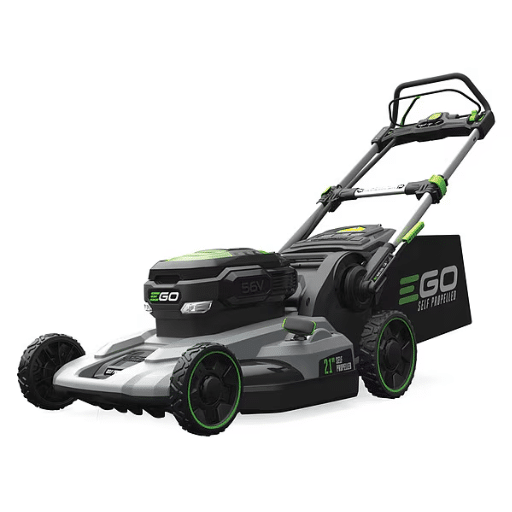In the realm of industrial mixing equipment, the ribbon mixer is a versatile and indispensable machine, ideal for blending a variety of substances. This blog post provides an in-depth analysis of what is a ribbon blade mixer and the ribbon mixer’s mechanism, focusing on how the ribbon blades function to achieve a consistent and homogeneous mix. The article is structured to first introduce the fundamental principles underpinning the operation of ribbon mixers. Following this, we will explore the design specifications that make ribbon mixers unique, such as the helical arrangement of their blades and the balance between speed and shear force. Furthermore, we will delve into practical applications across different industries—from food and pharmaceuticals to construction materials—demonstrating the mixers‘ adaptability. By breaking down the complexities involved in their operation, this post aims to furnish readers with a comprehensive understanding of how ribbon mixers contribute to efficient and effective mixing processes.
What is a Ribbon Blade Mixer and How Does it Work?
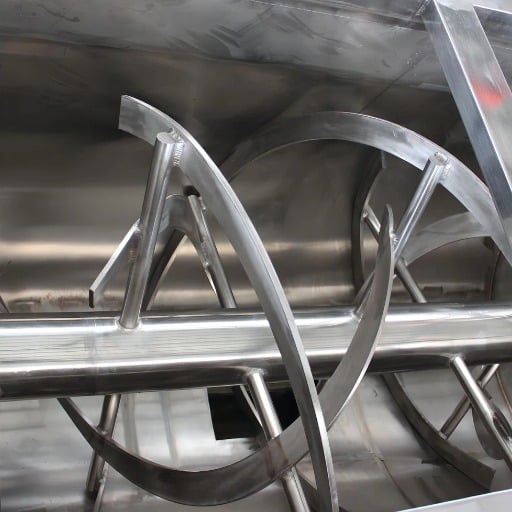
A ribbon blade mixer, or ribbon mixer, is known as an industrial equipment that mixes a wide variety of powders and granules or coats liquid particles to a high degree of homogeneity. Essentially, the ribbon mixer is composed of a U-shaped horizontal trough that has a set of helical ribbon blades or double spiral blades mounted in it, and a strong motor rotates this set. Because of this blade arrangement, raw materials are moved into the mixer in a radial and lateral direction, thus making the mixture hover in a double-helix configuration. The ribbons are designed so that they use the ‘tumble’ action, lifting the material over them. This creates a homogeneous mix in a short time. The combination of rotation speed and the pitch of the ribbons determines the amount of shear force applied and, consequently, the degree of uniformity of the mixture in its required form. This undoubtedly makes the ribbon-type mixers more efficient when dealing with batch operations with a high degree of accuracy and uniformity.
The Parts of a Ribbon Blender
When learning how a ribbon blender works, it is fundamental to know its parts. From my research, a standard ribbon blender is made of a few main parts, which include the U-shaped trough, the helical ribbon blades, a robust drive system, an efficient discharge valve, and a reliable support structure. The U-shaped trough is the containment vessel where the substances are put and as a result, the substances get in contact and move around during the mixing process. The ribbon blades are arranged in the form of a double helix, which is intended to develop a three-dimensional mixing action, allowing the material to be properly and evenly distributed throughout the entire batch. The blades are rotated at a precise speed and direction owing to the high-torque motor, which is critical for the efficient processing of various materials. The mixed content, however, can easily be removed since on the bottom of the trough is a discharge valve; this helps save time and increase productivity. These parts work closely together, thus giving the desired output in the form of quality of the ribbon blender, making it the best option for complicated mixing work of various products in different settings.
How A Ribbon Blender Functions
I can conclude that the operation of a ribbon blender primarily depends on its distinctive blades and rotational motion. The blender blade uses a helical ribbon which is driven by a powerful motor to rotate in a U-shaped trough. Those blades rotate, making a dual swirling motion, which lifts and tumbles the materials up and to the sides as well. This combined motion enhances mixing so that all the materials are uniformly mixed. The speed and angle of the blades are carefully set to provide the required shear force essential for the desired blend consistency. In addition, the blender has the capability of batch processing, which makes it suitable for use in mixing operations that require a high level of accuracy and uniformity.
Setbacks of Using a Ribbon Mixer in Powder Mixing
On the other hand, some of the specialists that I have consulted consider the ribbon mixer inefficient in terms of the time it takes to mix powders. Relying on the end user, ribbon mixers, in particular, employ bulging blades, this enables the user to fold some large bulk material which is hard to mix by other means properly. On top of this, ribbon mixers do allow for a certain amount of versatility, as they may be used with a large variety of particle sizes and densities, which is useful in a decent number of industries such as pharmaceuticals, food, and chemicals.
Ribbon mixer motors can be found between five and 125 hp, with their volumetric capacity ranging from small-scale units of about five cubic feet to big industrial machines with volumes of about 500 cubic feet. The speed at which blades rotate can be controlled, with the speed likely to be fixed between 20 to 100 revolutions every minute (RPM), so the shear force applied on the materials can be adjusted as per the requirement. In addition, the proper design of a ribbon mixer allows the implementation of any desired ratio of energy use to productivity levels, which is favorable both from an economic point of view and an ecological one. Such technical characteristics highlight the level of accuracy and flexibility of ribbon mixers, which makes them good equipment for efficient powder blending.
How to Select a Ribbon Blade Blender for Your Needs

First and foremost, and the single most important thing to consider when selecting a ribbon blade mixer, is to define the power requirements, such as mass and energy transfer into the bulk, as well as the type, shape, and construction material of the ribbon blades taking into consideration abrasion. In regards to plaster mixers, an effective abrasive design can be utilized in the manufacturing process. Considering batch size and throughput is also crucial, as the GSC dewpoint blender should have the capacity to withstand the time spent mixing. Mixing ratio and the macro and micro features of the mixture also play a vital role as these features dictate spindle configuration and speed control units. One should also take into consideration the ease of use of the blender, cleaning aspects, and overall conformity, taking into account the regulations in the industries with high hygiene requirements, i.e., pharmaceuticals and food processing. By employing these approaches, you can select a ribbon blade that meets your operational needs and improves the efficiency of your processes and the quality of the product.
Factors to Consider When Choosing a Ribbon Blender
In brief, there are some simple rules for choosing a ribbon blender. I have thought through and summarized the main points. From my research, the first point is that it is important to define the properties of the materials to be blended. This means particle dimension or size, density, and abrasiveness; in this case, the type of ribbon design or even the material out of which the blender is made will determine the kind of density and size. Batch volume capacities and throughput speed are also important; it is important to keep the size of your batches, the volume capacity of your blending vessel, and the processing speed required in mind. The mixture’s uniformity is also an important issue; the design of the blades, as well as the speed control of the rotation, should be spiced in such a way that each output merges all the core components. Further, maintenance and cleaning play an important part, especially in pharmaceuticals and food, where hygiene is a high priority. Hence, focus on the issue of ease of cleaning and the satisfaction of the requirements has to be paramount. If I integrate such concepts with my operational objectives, I will increase efficiency and also the end product and the operations of my blending processes.
Knowing the Types of Ribbon Blenders
According to what I know, In light of the variety of ribbon blenders available in the market, ribbon blenders can be classified according to the needs and design characteristics of the particular application. Regular ribbon blenders can be used for most blending functions in which there is no particular and severe requirement for customization. However, for more specialized applications, I would opt for paddle-ribbon blenders, which incorporate both paddles and ribbons to add to the shear action while being suitable for thicker and more viscous or sticky materials. Also, there are hybrid blenders where some parts can be taken out and replaced, allowing me to change the mixing elements for different operations. Various forms of the machine are well structured to meet certain mixing pressure criteria, meaning that I will be able to get a blender that will be suitable for my particular operational needs as well as the product requirements.
Optimal Operations of the Ribbon Blender During Your Work
To clarify my ribbon blender performs efficiently, there are a number of facets that I pay attention to and I have gathered them. Firstly, I make sure the capacity of the equipment I have is compatible with my production specifications by considering the batch size and the properties of the materials, most notably density and particle size. This usually requires a careful evaluation of the volumetric capacity of the blender, its motor power, and the throughput requirement. Another noticeable consideration is the blade speed, which ranges from 20 to 100 revolutions per minute; this would regard the intensity of mixing for different materials. Furthermore, regular maintenance, such as lubrication of moving parts, checking the blades for wear, and having maintenance schedules, maximizes the equipment’s life cycle. Then, consistent hygiene practices are observed, especially when handling foodstuffs and drugs, all components are easy to clean and the requirements are up to the threshold level as prescribed in the standard. All the parameters are considered reasonable for my particular operations and hence I increase performance of my ribbon blender.
Exploring the Benefits of Ribbon Blade Blenders in the Industry
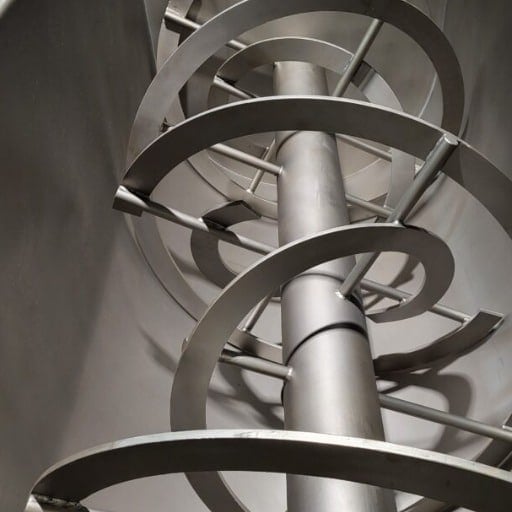
Across a number of industries, ribbon blade blenders have gained prominence owing to their efficiency and versatility. First and foremost, their configuration allows for the thorough mixing of solid-solid, liquid-solid, and liquid-liquid materials, which increases the product consistency and quality. Their design allows for faster mix times which translate to shorter batch processing times and greater volume of production in highly demanding environments. They are versatile and capable of processing a range of materials from very fine powders to more viscous ones, making them highly desirable in the pharmaceuticals, food, and chemicals sectors. Further, ribbon blade blenders are constructed to be energy efficient which results in low operational cost while still being effective. They do have other ranges, too, which allow for process-specific configurations such as scaling up or scaling down the blades, use of different blade configurations, and so on. These blenders also do a great job in taking care of maintenance aspects as they are often constructed such that they can be easily taken apart, cleaned, and dressed up to handle tough sanitation policies that are common in regulated industries. Therefore, it is established that with the use of ribbon blade blenders, the overall operational efficiency is improved, and the product delivered is uniform courtesy of very minimal downtime in the industrial arenas.
Utilization of Ribbon Mixers in Blending Processes
In the course of my investigation into the use of ribbon mixers in the blending process, I was able to obtain important information that emphasizes ribbon mixer’s importance in attaining better outcomes. The report states that the mixing efficiency is predominantly determined by the consistency in the different material loads in which the mixer operates. This is accomplished using the dual-spiral ribbons incorporated in ribbon mixers that enhance a cohesive blended mass. For effective blending, during the operation, it’s imperative on my part to correlate the size of my batch to the machine’s maximum size to avoid overloading or underloading, which are detrimental to blending. Again, in that case, the recommended speed is also necessary since it is likely that all other factors are optimal to start with. This sometimes takes a bit of trial and error, but at the end of the day, it results in tremendous improvements in the total time taken to blend the components. How regular this is obviously documented good practice improves efficiency since wear and tear are controlled to some extent. Adhering to these best practices will allow me to increase throughput and high product quality in my operations using ribbon mixers.
Cost-Effectiveness of Ribbon Blender Machines
The ribbon blender machines can be assumed to be financially viable as long as a number of certain conditions are met. The cost of the large bundle ribbon blender machines is high, however the cost of electricity is significantly lower. Their versatility in blending aids in the reduction of the number of purchased equipment, thus enhancing the efficiency of the operations. Moreover, as a result of the sturdy structure of these machines, maintenance and service costs are lower, and service life is longer, thus minimizing downtime. In addition, as the time taken for mixing is less, the output of production is high, thus resulting in higher productivity and faster return on investment. By thinking properly about the blender specifications to be purchased with respect to my operations of, I try to achieve the best cost-effectiveness with the valued level of quality of the end products.
Analysis of the Ribbon and Paddle Mixers
In defining the functional roles and the strengths of such devices as ribbon and paddle mixers, Those machines, which are called ribbon mixers, are characterized by a two-spiral ribbon configuration, which guarantees uniformity and consistency of mixing, meaning that they are appropriate for the use of fine powders and low-shear operations. Most ribbon mixers have a low range of operating speeds of about 20 to 100 RPM, which permits the operator to employ varying intensities of mixing suitable for different raw materials. On the other hand, paddle mixers consist of blades that cover a greater capacity and create a folding and intersecting action, which is preferred in the mixing of softer or more brittle materials. Their operating speeds are quite low in the ranges of 50 to 60 RPM in whipped or, in such cases, in battered materials, restricting the chances of damaging the very delicate components. Major parameters determining my selection of blenders include the capacity and the power rating of the machines and the amount requiring maintenance so that I am free to state that my requirements have been achieved. So, I have provided an answer to how I made a decision, considering particular product use and application processes, as well as the characteristics of the raw materials that were being mixed.
Understanding the Ribbon Blender Design and Functionality
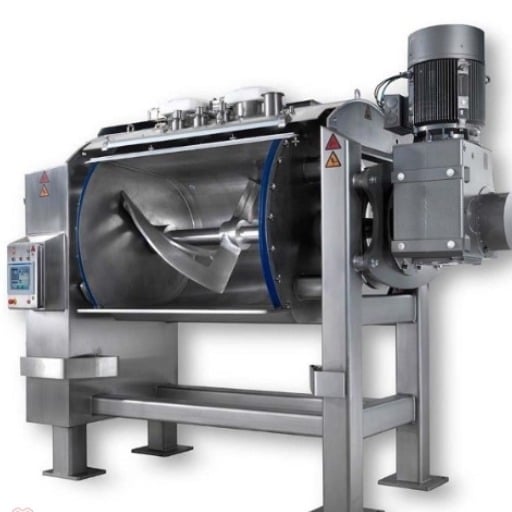
Ribbon blenders can be attention-grabbing devices with different mixing applications, but their design must possess certain key characteristics. In detail, the main components of this appliance are a trough whose shape is horizontally oriented U and which holds helical ribbons, which produce mixes that are well blended. Offsetting these dual-spiral ribbons helps material movement radially across and back and laterally, finishing a more unified mixture in the least amount of time. Parts selection usually involves stainless steel due to its durability, and it has satisfied hygiene requirements, which are crucial in the pharmaceutical and food industry. However, apart from their construction materials, a consideration for the drive system is a robust motor and gear reducer, which must be made as this system facilitates the efficient transmission of power, which aids in controlling the RPM required for the specific blending activity. Besides, they hold inbuilt systems like discharge valves, safety grates, and access doors for cleaning and maintenance that ease operating activities and safety measures. To conclude, there is little doubt that these design aspects have to be thoroughly understood in order to enhance the functionality of a ribbon blender in the industrial processes plus provide some useful insights into how it works.
Significance of Shaft and Ribbon for Mixing
Let us turn to the ribbon and shaft relations in the mixing processes. Their design integrates functionality to assist in the material blend in most of the industrial processes. Dual-spiral ribbons have the capacity to create radials and lateral movement, thus facilitating the even distribution and blending of the materials. For this action to be performed effectively, a shaft is required, which serves as a means of structural support and transmits the torque created by the motor. They try to maximize the alignment and curvature of the ribbon in order to ensure fuel is thoroughly mixed and the blending time is decreased, thus making it possible for the product to be easily reached. As far as the dependability of machines is concerned, the ribbon and the shaft matt are made robust enough to enhance machine dependability and durability, implying that low maintenance is required to operate the machine continuously. By means of careful design engineering and consideration of these primary aspects, I apply the ribbon and shaft design to the benefit of my mixing processes.
How U Shape Design Helps in the Improvement of Mixing
The configuration of ribbon blenders in the shape of U turns out to be very useful in furthering mixing by creating the perfect conditions for the movement of materials and their action. The mentioned design allows materials to move radially as well as tangentially within the trough for complete blending. The rounded edges of the trough match the movement pattern of the double spiral ribbons, thus reducing the presence of dead zones while maintaining the flow distribution. This shape is not only favorable for speeding up the mixing process but also for ensuring that the materials retain uniformity since mixing directions would be difficult, which is vital in the production of good quality final products. With such a scope of design knowledge, I improve the efficiency of mixing and quality of the end products in my work.
Modifying Ribbon Blenders per My Requirements
In order to alter ribbon blenders according to my wish, I carefully take into account many technical parameters and configurations based on the information acquired. First and foremost, capacity is an important factor, as there is a need to match the volume of the blender with the size of my batches in order to enhance throughput and efficiency. Customization options include adjusting the ribbon diameter and pitch to match the flow properties of the materials to be processed so effective mixing is attained with the lowest energy consumption possible. I also compare motor power, the aim being to have a powerful motor that does not use a lot of power while providing enough torque to work with my material’s viscosity. The material of construction is customized; for instance, if corrosion resistance and hygienic conditions are critical requirements, stainless steel is chosen. I factor in additional options such as thermal control for processes that need temperature control and variable speed drives for its different applications. In addressing those parameters, I use ribbon blenders for my specific operational needs which enables me to improve the performance and quality of the product.
Applications of Ribbon Blenders in Various Industries
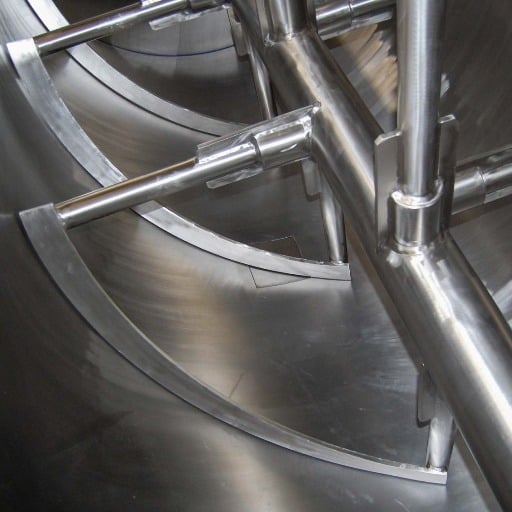
Due to their strong construction and proper mixing characteristics, ribbon blenders can be used across various sectors. In the pharmaceutical industry, ribbon blenders are used for the blending of granules or powders, which is a critical stage in ensuring that tablets possess the required degree of homogeneity while observing sterile conditions. In the food industry, ribbon blenders are used to mix dry constituents like spices or flour, which are necessary for the uniformity and flavor of the products. In the plastic, fertilizer and related industries, these machines are useful in mixing fine powders and other particles. Further, ribbon blenders are also used in the construction industry for the batch mixing of concrete, mortar, and other substances. The versatility of these machines is modulatory and very much relevant to the desired operations, which include viscosity and size of the batch, among others. Given the above principles, I am able to formulate suitable outlining principles of how the ribbon blenders may be used to boost productivity and the quality of products in different industrial operations.
The Role of Ribbon Mixers in the Pharmaceutical Industry
In the pharmaceutical industry, I use ribbon mixers because they enable me to create homogenous mixtures required for standardized drugs with precision and reliability. These mixers are adept at handling fine powders, which is crucial for the even distribution of active ingredients in tablet production. The ability to scale ribbon mixers enables me to easily control small or sizeable batch sizes, as the situation insists. Moreover, as I use them, I am careful not to breach the set sanitary requirements, and the stainless steel material makes them easy to clean and not easily contaminated. In addition, with variable speed controls, blending activities can be adjusted and optimized while implementing crucial pharmaceutical compounds’ sensitive properties. Through those, I am able to enhance my formulation processes to produce quality outputs, and the outputs meet pharmaceutical manufacturing processes.
Industrial Usage of Ribbon Blenders within the Food Industry
When it comes to the food industry, ribbon blenders come in handy when I want to conserve the consistency of the dry mix or dry mixture, such as baking powders, spice blends, and flour mixture. This equipment’s efficient design enables thorough mixing within a relatively short cycle time, which is essential for the unity and balance of flavor in food products. Ribbon blenders are so gentle during use that they help to prevent the segregation of ingredients, and even delicate components are well mixed. In this way, I can process practically any product formulation by varying the blend setting to meet the requirements of each ingredient. Also, as per hygiene requirements that sandwich the food industry, making an easy-to-clean construction out of stainless steel meets the standard expected in the industry. By carrying out these procedures, I streamline my food processing operations, making them more efficient, and I bring high-quality products to the market.
The Role of Ribbon Blenders in Chemical Processing
During my work in chemical processing operations, ribbon blenders are a necessity due to their effectiveness in mixing fine powders and granular materials. Their rigid structure is able to withstand the harsh conditions of chemical production, where uniformity and accuracy are central features. In addition, I modified or adjusted these settings to the required levels in order to get the best blending efficiency. The performance of ribbon blenders depends on a number of factors, including ribbon pitch and diameter, that correspond with the material flow properties, thereby enhancing energy efficiency and reducing the chances of over-mixing. The motor power is also calibrated with the intention of giving sufficient torque for a specific workload, thus promoting better performance while saving energy. Another important consideration is material compatibility, hence I select corrosion free compose materials such as stainless steel to enhance the life span of the equipment. In so doing, the quality and efficiency of chemical products that meet safety and regulatory requirements are maintained.
References
-
What is a Ribbon Blender and How Does it Work? – This source explains the mechanics of ribbon blenders, including how the helical ribbons function.
-
How Does a Ribbon Blender Work – A Detailed Guide – This guide provides an in-depth look at the principles behind ribbon blenders and their mixing capabilities.
-
What is a Ribbon Mixer & Blender: A Quick Review – Offers a quick overview of ribbon blenders, highlighting their suitability for blending various materials.
Frequently Asked Questions (FAQ)
Q: What is a ribbon blender mixer, and how does it work?
A: A ribbon blender mixer is a type of mixer used to mix a variety of dry materials and powders. It features a central shaft equipped with a helical ribbon agitator that moves the materials in a convective mixing pattern. The outer ribbon moves the materials in one direction while the inner ribbon circulates them in the opposite direction, ensuring a thorough mix.
Q: What are the benefits of a ribbon blender mixer compared to other types of mixers?
A: The benefits of a ribbon blender mixer include its ability to handle a wide range of solid materials and its efficient mixing speed. It is capable of mixing dry powders evenly and is often used for blending large volumes. The horizontal ribbon design ensures a consistent mix, making it one of the best ribbon blenders available.
Q: What is a horizontal ribbon mixer, and where is it commonly used?
A: A horizontal ribbon mixer is a type of mixing equipment featuring a horizontal design with a central shaft and helical ribbons. It is commonly used for blending dry materials and powders in industries like pharmaceuticals, food processing, and chemical manufacturing. This mixer is also used for mixing applications requiring a gentle and thorough blending process.
Q: How does the agitator function in a ribbon mixer machine?
A: In a ribbon mixer machine, the agitator consists of two helical ribbon blades, an outer ribbon, and an inner ribbon. The agitator rotates around the central shaft, and the ribbons move materials in opposite directions. This action creates a convective mixing pattern, ensuring uniform blending of the materials added to the mixer.
Q: Can a ribbon mixer be used to blend both solid and liquid materials?
A: While ribbon mixers are primarily used for blending dry materials and powders, certain models can accommodate the mixing of solid and liquid materials. However, it’s important to select the right ribbon mixer blenders designed for such applications to ensure optimal performance.
Q: What are some features to consider when choosing the best ribbon blender for industrial use?
A: When choosing the best ribbon blender, consider features like the capacity, mixing speed, and direct drive options. Look for models with variable frequency drives for adjustable speed control. Additionally, consider the build quality, materials used, and the reputation of the manufacturer, such as Ross ribbon blenders, known for their reliability.
Q: How does a capsule polishing machine differ from a ribbon blender mixer?
A: A capsule polishing machine is specifically designed for polishing and cleaning capsules after they are filled, whereas a ribbon blender mixer is used for mixing and blending dry powders and materials. The two machines serve different purposes in the pharmaceutical manufacturing process.







